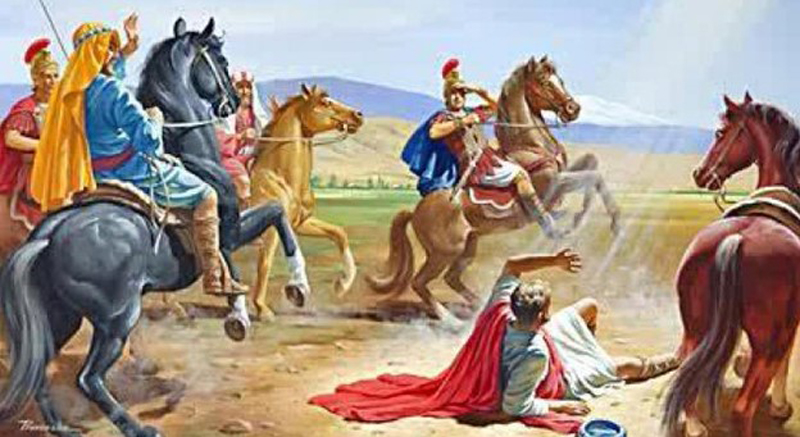St. Paul first appears on the biblical scene as Saul in the Acts of the Apostles. He was raised in the Jewish faith as a Pharisee trained in the strict observance of God’s Law.
Believing they had broken away from that Law, Saul openly persecuted Christians. As the first Christian martyr Stephen was being stoned to death, Saul watched the cloaks of the persecutors (Acts 7: 58). He went about, “… entering house after house and dragging out men and women, he handed them over for imprisonment.” (Acts 8: 3b).
On his way to Damascus to further persecute early Christians, Saul had an encounter with the Risen Jesus Christ (Acts of the Apostles 9: 1–19, Galatians 1: 13–14). The story goes that he was struck by a blinding light and fell from his horse.
Jesus then asked, “Saul, Saul, why are you persecuting me?” Paul replied, “Who are you, sir?” Jesus responded, “I am Jesus whom you are persecuting” (Acts 9: 4-5). Jesus then sent Saul into Damascus to wait for further instructions. Saul was shaken and blinded by the experience.
When a Christian named Ananias came and baptized Saul, his blindness went away. As a result of this encounter Saul became a follower of Christ. He was now convinced that fellowship with the risen Jesus Christ, not the observance of the Law, was all that was needed to receive God’s promise of salvation (Galatians 1: 11–12; 3: 1–5).
Saul was well respected by the Jewish community and his peers. But he gave it all up for Christ. “More than that, I even consider everything as a loss because of the supreme good of knowing Jesus Christ my Lord.” (Philippians 3: 8).
Saul returned to Jerusalem as Paul and met with Peter. Paul realized that Jesus was sent by the Father to bring salvation for all. Paul taught that we are united with Christ in faith and baptism: “We were indeed buried with him through baptism into death, so that, just as Christ was raised from the dead by the glory of the Father, we too might live in newness of life.” (Romans 6: 4)
When he returned to Jerusalem Paul and met with Peter. He felt the call of Christ to proclaim the Gospel to the gentiles. Thus, he spent the rest of his life spreading the faith. Through his letters we have a written record of the history of the Church and the expansion of Christianity. There are 13 epistles that bear Paul’s name as the author; however, scholars do not believe that he wrote them all.
Paul was the author of first and second Thessalonians, Galatians, Philippians, first and second Corinthians, Romans and Philemon. The others were written after his death by his followers, probably inspired by his teachings.
Adapted by A. J. Valentini from: Loyola Press. (2020, July 14). The Conversion of St. Paul the Apostle. https: //www.loyolapress.com/catholic-resources/saints/saints-stories-for-all-ages/the-conversion-of-saint-paul-the-apostle/
